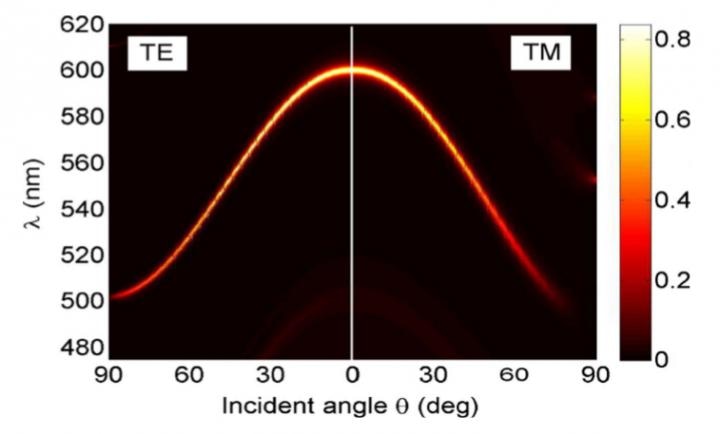Apr 26 2018
 Absorption on the plane of incident angle and wavelength. (Credit: Springer)
Absorption on the plane of incident angle and wavelength. (Credit: Springer)
Although graphene has various properties—for instance, it is an exceptionally good conductor—it does not have the ability to optimally absorb light. In order to overcome this constraining feature of graphene, which is otherwise an amazing material, physicists chose to embed a graphene sheet within a flat photonic crystal, which efficiently controls the flow of light.
This combination offers graphene considerably improved light-absorbing abilities. Arezou Rashidi and Abdolrahman Namdar from the University of Tabriz, Iran, have shown, in a new research reported in EPJ B, that when the temperature in such a hybrid cavity structure is changed, its potential for optical absorption can be tuned. The researchers report that graphene derives its optical characteristics from the thermo-optical and thermal expansion effects. Prospective applications include ultra-fast lasers, light sensors, and systems with the ability to modulate incoming optical beams.
The researchers analyzed the light absorption of the material as a function of the light polarization, the chemical energy potential, temperature, and its incidence angles. To achieve this, they employed a modeling technique known as the transfer matrix technique. They discovered that in the case of normal light incidence, improved absorption occurs at room temperature; however, when there is an increase in temperature, the absorption peak is shifted toward the red light.
The researchers demonstrated that when light is incident at an angle, the absorption peaks are sensitive not only to the incident angles but also to the polarization state of the light. They also discovered that when the incident angle was increased, the peak wavelength was shifted toward the blue light.
The researchers concluded that it is possible to control the peak wavelength by altering the incident angle or the temperature, and also the chemical energy potential of graphene. This demonstrates that there occur various tunable properties that can be exploited while developing graphene-based nano-devices, for instance, temperature-sensitive sensors and absorbers.